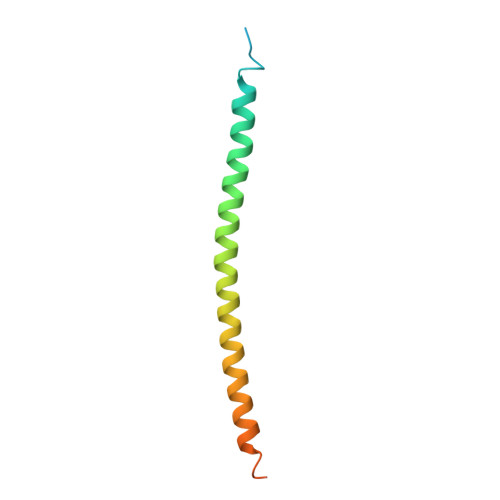Structural and biological features of FOXP3 dimerization relevant to regulatory T cell function.
Song, X., Li, B., Xiao, Y., Chen, C., Wang, Q., Liu, Y., Berezov, A., Xu, C., Gao, Y., Li, Z., Wu, S.L., Cai, Z., Zhang, H., Karger, B.L., Hancock, W.W., Wells, A.D., Zhou, Z., Greene, M.I.(2012) Cell Rep 1: 665-675
- PubMed: 22813742
- DOI: https://doi.org/10.1016/j.celrep.2012.04.012
- Primary Citation of Related Structures:
4I1L - PubMed Abstract:
FOXP3 is a key transcription factor for regulatory T cell function. We report the crystal structure of the FOXP3 coiled-coil domain, through which a loose or transient dimeric association is formed and modulated, accounting for the activity variations introduced by disease-causing mutations or posttranslational modifications. Structure-guided mutagenesis revealed that FOXP3 coiled-coil-mediated homodimerization is essential for Treg function in vitro and in vivo. In particular, we identified human FOXP3 K250 and K252 as key residues for the conformational change and stability of the FOXP3 dimer, which can be regulated by protein posttranslational modifications such as reversible lysine acetylation. These studies provide structural and mechanistic explanations for certain disease-causing mutations in the coiled-coil domain of FOXP3 that are commonly found in IPEX syndrome. Overall, the regulatory machinery involving homooligomerization, acetylation, and heteroassociation has been dissected, defining atomic insights into the biological and pathological characteristics of the FOXP3 complex.
Organizational Affiliation:
State Key Laboratory of Cell Biology, Institute of Biochemistry and Cell Biology, Chinese Academy of Sciences, Shanghai, China 200031.

















